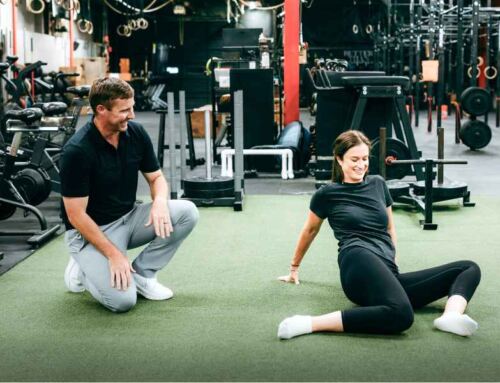The Path to Powerful Glutes: Strengthening Glutes for Stability and Performance
In the United States, low back pain (39%) and lower limb pain (36.5%) are the most common orthopedic pain complaints among adults over any three-month period [1]. Research indicates that weak gluteal muscles often contribute to changes in movement patterns which can lead to both types of pain. As a physical therapist, I encounter this frequently and will share some effective exercises to strengthen your glutes.
First, let’s cover a bit of anatomy. The glutes are composed of three muscles: the gluteus maximus, gluteus medius, and gluteus minimus.
To illustrate their importance, let’s consider a scene from one of my favorite childhood movies, Happy Gilmore.
In the movie, Happy’s coach, Chubbs, tells him, “it’s all in the hips” when swinging the club. This advice is spot on. These muscles generate significant power for activities such as walking, running, kicking, and swinging (like in baseball or golf) while also providing a stable platform for movement.
The glute med, in particular, offers “dynamic stability,” reducing the side-to-side wobble when we move. If this wobble isn’t controlled, it can lead to altered movement mechanics, resulting in low back pain and lower limb pain due to decreased stability.
When working with patients and athletes, these are my top three go-to exercises:
Lateral Walks
This exercise focuses specifically on strengthening the glute medius (middle glute), enhancing hip stability during movement.
- Start with a light-moderate resistance loop around your ankles.
- Slightly bend your knees, keep light tension in the band at the start position and step sideways, increasing tension in the band. Perform 5-10 steps total in one direction.
- Stay facing the same direction and repeat in the opposite direction to ensure you target both legs.
- Keep your toes pointed straight and don’t let them “turn out” as you go.
- Repeat the 5-10 steps in each directly 2-3 times, 2 times per day.

Hip Clocks
This exercise emphasizes the significance of stability and proper glute muscle utilization.
- Imagine standing in the middle of a clock.
- Slowly reach one foot out towards 2 o’clock then back to the start position (try not to put your foot on the ground!)
- Repeated the same motion, targeting 3, 4, and 7 o’clock, respectively.
- Work on keeping your hips level with good control.
- Repeat 2-3 sets of 5 rounds on each leg, 2 times per day.

3-Way Hip Off-Step
This exercise focuses on strengthening both the gluteus maximus and medius while incorporating a stability component, making it a two-for-one exercise
Begin standing on a slightly elevated surface (i.e. a step in your home) with one leg on the elevated surface and one leg hanging off.
- Slowly with good control, kick your foot forward and return to the start position followed by kicking sideways (keeping your toes pointed forward), then repeating the same motion backwards.
- Keep your back straight during these kicks, avoiding leaning away from the motion.
- Perform 2-3 sets of 10 reps, alternating sets of 10 on each leg, 2 times per day.

Conclusion
In conclusion, these exercises serve as excellent introductions to glute strength and stability, yet only begin to explore the vast potential of what can be done!
For a comprehensive approach tailored to your individual needs and goals, having a full evaluation by a MovementX Physical Therapist can help identify specific areas of additional improvement, ultimately reducing pain and optimizing movement & performance!
References
- Lucas JW, Connor EM, Bose J. Back, lower limb, and upper limb pain among U.S. adults, 2019. NCHS Data Brief, no 415. Hyattsville, MD: National Center for Health Statistics. 2021. DOI: https://dx.doi.org/10.15620/cdc:107894
- Cooper NA, Scavo KM, Strickland KJ, et al. Prevalence of gluteus medius weakness in people with chronic low back pain compared to healthy controls. Eur Spine J. 2016;25(4):1258-1265. doi:10.1007/s00586-015-4027-6
About the Author
Dr. Romin Ghassemi is a physical therapist in Fuquay-Varina, North Carolina. He specializes in Orthopedic Conditions, Sports Injuries, and Neurological Conditions. Romin Ghassemi utilizes a variety of methods such as hands-on therapy, functional fitness, and mobilization to help you regain your strength, mobility, and vitality. Whether you’re an athlete recovering from an injury or just looking to enhance your overall well-being, he’s here to support you every step of the way!








